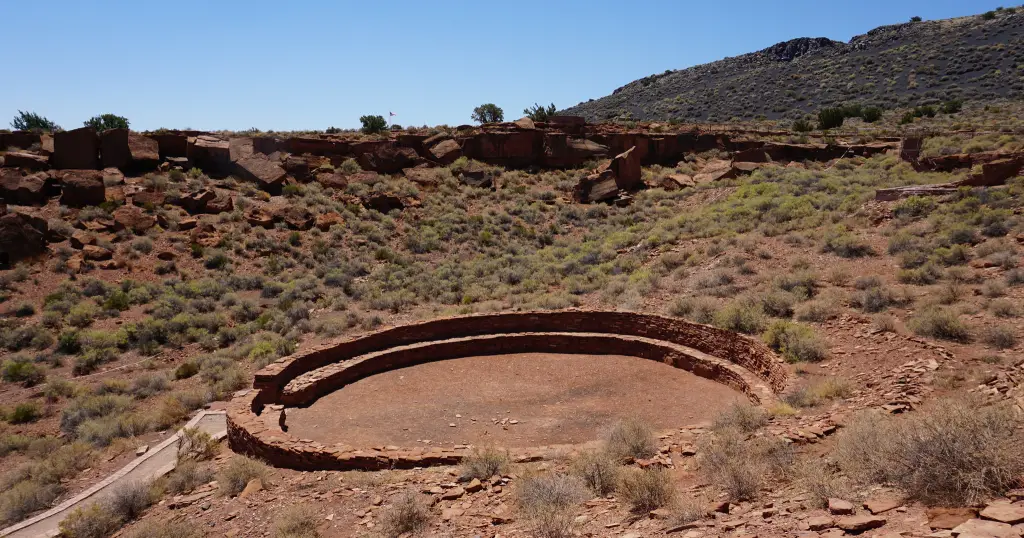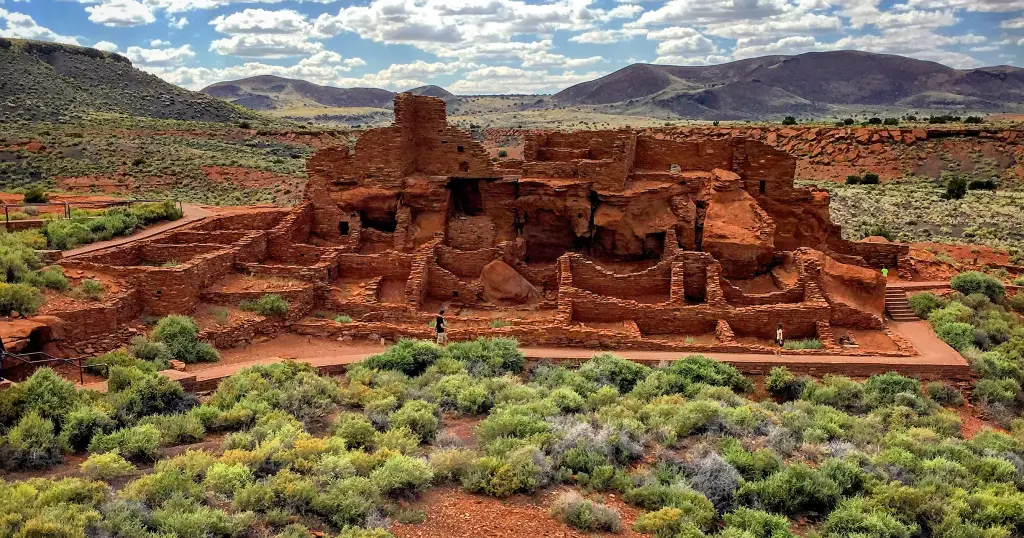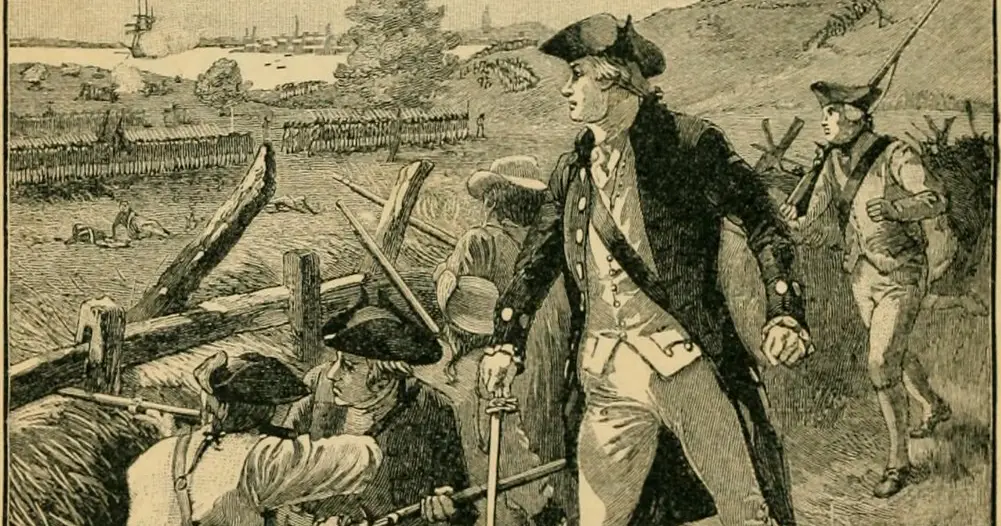The rich tapestry of Prescott’s history is woven with diverse threads, among which Native American contributions hold a pivotal role. This in-depth exploration delves into the multifaceted impact of Native American cultures, practices, and knowledge on the formation and evolution of Prescott.
From pre-colonial times to the present day, Indigenous influences have shaped the city in myriad ways, making an indelible mark on its cultural, economic, and social fabric.
This article aims to shed light on these contributions, offering a comprehensive and respectful tribute to the Native American legacy that is integral to Prescott’s history.

Pre-Colonial Era
In the pre-colonial era, the area that would become Prescott was inhabited by various Native American tribes, each with distinct cultures and traditions. These tribes had established a deep connection with the land, evident in their sophisticated land use, agricultural practices, and environmental stewardship.
Their intimate knowledge of the region’s ecology and resources laid the groundwork for sustainable living, demonstrating an advanced understanding of agriculture, wildlife management, and ecological balance.
This era showcases the rich history and legacy of Native American societies, underscoring their pivotal role in shaping the natural and cultural heritage of the region before European settlement.
Native American Presence Before Prescott
Long before Prescott emerged as a city, the land was home to various Native American tribes. These tribes, each with their unique culture and traditions, laid the foundational elements of what would become Prescott.
They established intricate social structures and sophisticated environmental management systems, which demonstrate their deep connection with the land.
The indigenous people’s understanding of the local ecosystem was profound. They practiced sustainable hunting, fishing, and gathering, ensuring that the natural resources were preserved for future generations. This stewardship played a crucial role in maintaining the ecological balance, a legacy still relevant in contemporary environmental practices in Prescott.
Indigenous Land Use and Environmental Stewardship
The tribes’ land use strategies were a testament to their advanced knowledge of agriculture, irrigation, and resource management. They cultivated crops well-suited to the region’s climate, employing techniques that enhanced soil fertility and conserved water – practices that hold lessons for modern sustainable agriculture.
Their environmental stewardship extended beyond farming. The tribes actively managed forest areas, using controlled burns to prevent larger wildfires and maintain healthy ecosystems. This practice, now recognized as an essential tool in forest management, highlights the enduring relevance of Indigenous knowledge in contemporary environmental policies.
Formation of Prescott
The formation of Prescott was significantly influenced by the presence and interactions with Native American tribes in the region. These early interactions shaped the city’s development, as settlers learned from the indigenous knowledge of the land and resources.
The collaborations and conflicts that arose during this formative period were pivotal in defining the city’s boundaries, social structures, and future relationships between Native Americans and settlers.
This complex interplay of cooperation and contention during Prescott’s early days laid the foundation for its diverse cultural landscape and set the stage for the city’s ongoing evolution and growth.
Indigenous Influence on Early Settlement
The establishment of Prescott was not an isolated event but a chapter in a long history of indigenous presence and influence. The early settlers in Prescott encountered a landscape significantly shaped by Native American tribes, whose knowledge of the land proved invaluable.
These early interactions were a complex mix of collaboration and conflict. While there were instances of cooperation in trade and mutual aid, there were also periods of tension and struggle, reflecting the broader narrative of American expansion into indigenous territories.
Cultural Exchanges
The cultural exchanges between Native Americans and early Prescott settlers were profound and far-reaching. Indigenous art, stories, and customs influenced the emerging cultural landscape of Prescott, contributing to a unique blend of traditions.
These exchanges were not one-sided; Native American cultures also absorbed aspects of the settlers’ ways, leading to a dynamic interplay of cultures. This cultural melding is evident in the city’s architecture, art, and community events, which often reflect a fusion of Native American and settler influences.

Cultural Contributions
The cultural landscape of Prescott has been deeply enriched by the contributions of its Native American communities. Their vibrant traditions, art, and crafts have infused the city with a unique and diverse aesthetic.
From intricate beadwork and pottery to storytelling and dance, these cultural elements reflect the rich heritage and deep spiritual connections of the Native American people.
Their influence extends beyond tangible art forms, impacting local festivals, ceremonies, and community practices, thereby weaving a rich tapestry of indigenous culture into the very fabric of Prescott’s identity and heritage.
Art and Craftsmanship
Native American art and craftsmanship have significantly impacted Prescott’s artistic landscape. Traditional art forms, such as pottery, weaving, and beadwork, not only served practical purposes but also expressed deep spiritual and cultural meanings.
The influence of these art forms is visible in local art galleries and museums. Many contemporary Prescott artists draw inspiration from Native American techniques and motifs, creating works that honor and continue these rich artistic traditions.
Native American Architecture
Indigenous architecture, characterized by its harmony with the natural environment, has left a lasting mark on Prescott’s architectural heritage. The use of local materials and construction methods adapted to the region’s climate was a testament to the ingenuity and resourcefulness of Native American builders.
The influence of this architecture is seen in some of Prescott’s historical buildings, which incorporate elements like adobe walls and wooden beams, a nod to the Indigenous architectural legacy.
Economic Contributions
Native American tribes have made substantial economic contributions to Prescott, notably in the realms of agriculture and trade. Their sophisticated agricultural practices, including advanced irrigation systems and crop cultivation techniques, laid the groundwork for sustainable farming in the region.
Additionally, their extensive trade networks established vital economic connections and facilitated the exchange of goods, ideas, and cultural practices.
These contributions not only boosted the early economy of Prescott but also set a precedent for future economic development, highlighting the significance of indigenous knowledge and entrepreneurial spirit in shaping the city’s economic history.
Agricultural Practices
The agricultural practices of Native Americans greatly influenced Prescott’s agricultural development. Indigenous methods of crop rotation, soil enrichment, and water conservation were advanced for their time and provided a foundation for sustainable agriculture in the region.
These practices not only improved crop yields but also contributed to the preservation of the local environment, a principle that continues to guide modern farming practices in Prescott.
Trade and Economic Interactions
Trade was a vital aspect of the interaction between Native Americans and Prescott settlers. Indigenous tribes were instrumental in establishing trade routes that facilitated the exchange of goods like fur, metals, and food.
This economic interdependency played a crucial role in the development of Prescott’s early economy, laying the groundwork for the city’s subsequent economic growth.
Social and Political Impact
The social and political landscape of Prescott has been profoundly shaped by its Native American communities. Historically, these communities established foundational social structures and governance models that influenced the city’s development.
Their approach to leadership, community organization, and consensus-building provided valuable frameworks for local governance. Socially, the integration of Native American traditions, values, and perspectives has enriched the multicultural tapestry of Prescott, fostering a community characterized by diversity and inclusiveness.
The enduring presence of Native American voices in social and political arenas continues to play a vital role in shaping policies and promoting a more equitable and representative society in Prescott.
Community Relations
The relationship between Native American communities and Prescott settlers was complex and multifaceted. While there were instances of cooperation and mutual support, there were also periods of tension and conflict.
Despite these challenges, there were significant efforts towards social integration, with instances of intermarriage and cultural exchange that enriched both communities.
Political Leadership and Governance
Indigenous leaders played a crucial role in the governance and political life of early Prescott. Their knowledge of local environments, social structures, and diplomatic strategies was invaluable in negotiations and decision-making processes. These leaders often acted as intermediaries and advisors, influencing the political landscape of the burgeoning city.
Their impact extended to the way local governance evolved, incorporating aspects of indigenous governance models, which emphasized consensus-building and a deep respect for communal resources. This legacy can still be discerned in some of Prescott’s community-driven initiatives and policies.
Education and Knowledge Sharing
The Native American communities have significantly enriched the educational landscape of Prescott through the sharing of their extensive traditional knowledge and wisdom. Their teachings, especially in areas like local ecology, herbal medicine, and history, have provided invaluable insights and alternative perspectives within educational settings.
Storytelling and oral traditions, central to Native American cultures, have also played a key role in preserving and passing down history and moral lessons, greatly enhancing the cultural and educational richness of Prescott.
This ongoing exchange of knowledge not only honors indigenous heritage but also fosters a deeper understanding and appreciation of diverse worldviews among the residents of Prescott.
Educational Contributions
The educational contributions of Native Americans to Prescott’s history are significant yet often underrecognized. Traditional knowledge about the local flora, fauna, and geography was passed down through generations and shared with settlers, enriching their understanding of the region.
This exchange of knowledge influenced the development of educational systems in Prescott, where aspects of indigenous knowledge were incorporated into teaching methods and curricula, emphasizing a holistic understanding of the environment and history.
Oral Traditions and Storytelling

The oral traditions and storytelling of Native Americans have profoundly impacted Prescott’s cultural and literary landscape. These stories, rich in moral and educational value, served as a way to preserve history, transmit cultural values, and provide entertainment.
The influence of these narratives is evident in local literature and public discourse, where themes and storytelling techniques borrowed from indigenous traditions continue to resonate. These stories, often shared in community gatherings and educational settings, play a crucial role in keeping the history and values of Native Americans alive in Prescott’s collective memory.
Environmental Stewardship
Native American tribes have played a crucial role in shaping the principles of environmental stewardship in Prescott. Their traditional knowledge and practices, such as controlled burns for land management and sustainable harvesting techniques, have profoundly influenced modern approaches to ecological conservation and resource management.
This legacy is a testament to their deep understanding of and respect for the natural world, offering valuable lessons for contemporary environmental challenges.
By integrating these age-old practices with modern science, Prescott continues to benefit from a holistic and sustainable approach to environmental stewardship, a cornerstone of the city’s commitment to preserving its natural beauty and resources for future generations.
Land and Resource Management
Native American land and resource management practices have left a lasting legacy in Prescott. Their holistic approach to environmental stewardship, which saw the land as a living, interconnected entity, provided a model for sustainable living.
These practices, including controlled burning, water conservation, and biodiversity preservation, have influenced modern environmental policies in Prescott, guiding efforts to manage natural resources responsibly and sustainably.
Traditional Environmental Knowledge
The traditional environmental knowledge of Native American tribes is a treasure trove of insights into sustainable living. This knowledge, accumulated over centuries of living in harmony with the land, offers valuable lessons for contemporary environmental challenges.
Efforts to document and integrate this knowledge into local environmental initiatives have gained momentum, recognizing the need to blend traditional wisdom with modern science to address issues like climate change, habitat conservation, and sustainable development.
Spiritual and Religious Influence
The spiritual and religious beliefs of Native American tribes have had a profound and lasting impact on the spiritual landscape of Prescott. Their deep connection to the land and the cosmos introduced new dimensions of spirituality and religious practices to the area.
This influence is evident in the syncretism of indigenous and settler belief systems, leading to a unique spiritual environment in Prescott.
The incorporation of Native American spiritual concepts, such as reverence for nature and ancestral wisdom, has enriched the city’s cultural and religious diversity, fostering a community that values and respects a wide array of spiritual expressions.
Religious Practices and Beliefs
The spiritual and religious beliefs of Native Americans have had a significant influence on the spiritual landscape of Prescott. These beliefs, deeply rooted in a connection to the natural world and ancestral traditions, introduced concepts of spirituality that were new to many settlers.
The syncretism of indigenous and settler religious beliefs led to a unique spiritual environment in Prescott, where respect for diverse religious practices and the integration of different belief systems became the norm.
Conflict and Resistance
The history of Prescott has been marked by periods of conflict and resistance involving its Native American communities. These conflicts often stemmed from disputes over land, resources, and cultural rights, reflecting the broader struggle of Native Americans against encroachment and displacement.
The legacy of these conflicts is a poignant reminder of the resilience and determination of Indigenous peoples in the face of adversity. It underscores the importance of acknowledging and learning from these challenging chapters in history, to foster understanding, reconciliation, and a more just future for all communities involved.
Resistance and Rebellions
The history of Prescott is marked by periods of resistance and rebellion by Native American tribes. These conflicts, often arising from disputes over land, resources, and cultural preservation, highlight the struggles faced by Native Americans in the wake of expanding settler populations.
The legacy of these uprisings is a testament to the resilience and courage of Native American communities and their enduring fight for rights and recognition. These events are a crucial part of Prescott’s history, offering lessons in understanding and addressing historical injustices.
Modern Contributions
Today, the Native American community continues to make significant contributions to the cultural, social, and economic fabric of Prescott. Modern contributions are diverse, ranging from contemporary art and participation in local politics to innovative environmental stewardship and community development projects.
These contributions reflect both a deep respect for traditional values and a dynamic engagement with contemporary issues, showcasing the enduring presence and influence of Native American cultures in shaping the evolving identity of Prescott.
Their ongoing involvement in various aspects of city life underscores the vibrant and living nature of their heritage and its importance to the city’s future.
Contemporary Native American Presence
Today, the presence of Native American communities in Prescott is a vibrant and integral part of the city’s cultural and social fabric. These communities continue to contribute to the city’s development in various fields, including art, education, politics, and environmental stewardship.
Modern contributions from Native Americans in Prescott reflect both a continuity of traditional practices and an adaptation to contemporary realities, demonstrating the dynamic and evolving nature of their impact on the city.
Recognition and Preservation
In recent years, Prescott has seen a growing movement to recognize and preserve the rich Native American heritage integral to its history. Efforts include the establishment of museums and cultural centers dedicated to celebrating indigenous history, art, and traditions.
Educational programs and community initiatives are actively promoting the understanding and appreciation of Native American contributions, ensuring that this vital part of Prescott’s legacy is not only remembered but also continues to inform and enrich the community’s future.
These initiatives represent a collective commitment to honoring the past while building a more inclusive and culturally aware future.
Efforts in Preserving Native Heritage
In recent years, there has been a growing recognition of the importance of preserving Native American heritage in Prescott. Initiatives aimed at protecting and celebrating indigenous cultures, languages, and traditions have gained support, both from governmental bodies and local communities.
These efforts include the establishment of museums, cultural centers, and educational programs that focus on Native American history and contributions, ensuring that this rich heritage is not only preserved but also shared with future generations.
FAQs Section
In this section, we will be delving into some of the most common inquiries and curiosities that surround our topic.
How did Native American tribes influence the early development of Prescott?
Native American tribes influenced the early development of Prescott through their land stewardship, environmental knowledge, and cultural exchanges. Their practices in sustainable living and resource management laid the groundwork for the city’s ecological balance and community structure.
What are some notable Native American contributions to Prescott’s art and culture?
Notable contributions include traditional crafts like pottery, weaving, and beadwork, which have inspired local art. Storytelling and oral traditions have enriched Prescott’s literary scene, and the integration of Native American themes in festivals and public events highlights their cultural impact.
How have Native American agricultural practices influenced modern farming in Prescott?
Indigenous agricultural practices, such as crop rotation, soil enrichment, and water conservation methods, have greatly influenced modern farming in Prescott. These sustainable practices have been adopted to enhance soil fertility and manage water resources more efficiently, benefiting the region’s agriculture.
Conclusion: native American Contributions to Prescott’s History
The story of Prescott’s development is incomplete without acknowledging the profound contributions of Native American communities. From shaping its early days to influencing its modern identity, its legacy is a rich tapestry of cultural, economic, and environmental influences that continue to define the city.
This exploration underscores the importance of recognizing and honoring these contributions, not just as historical footnotes, but as living, integral elements of Prescott’s identity.
By understanding and appreciating this legacy, we can foster a more inclusive and comprehensive view of the city’s history, ensuring that the contributions of Native Americans are celebrated and remembered.
As Prescott looks to the future, it carries with it the strength and wisdom of its Native American heritage, a guiding force in the city’s ongoing story.



Leave a Comment
You must be logged in to post a comment.